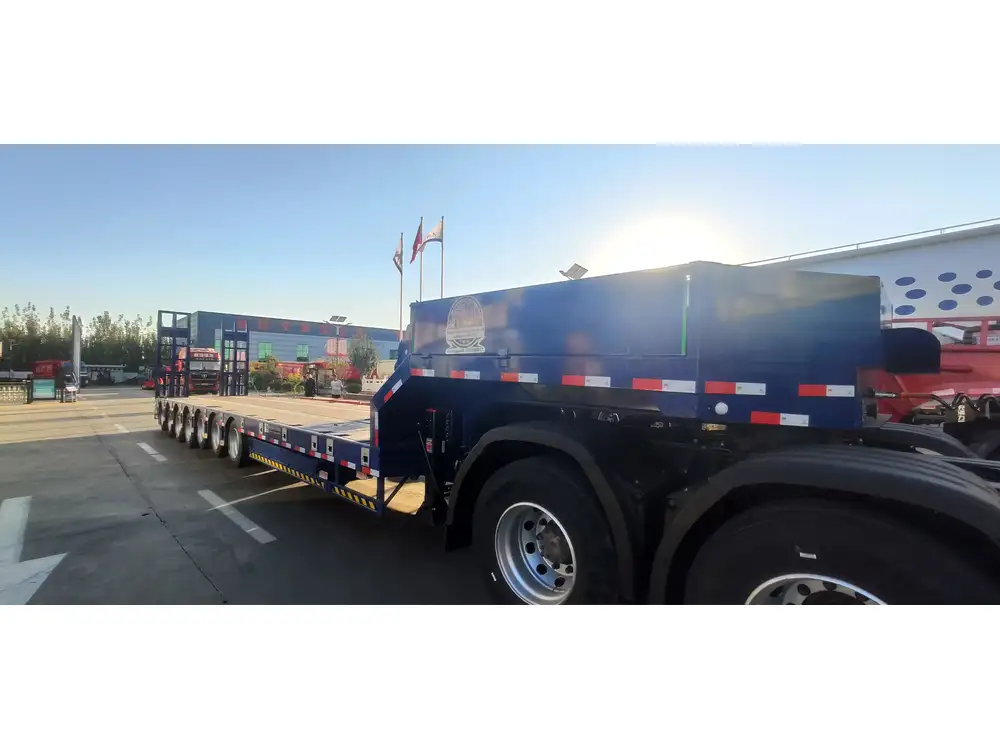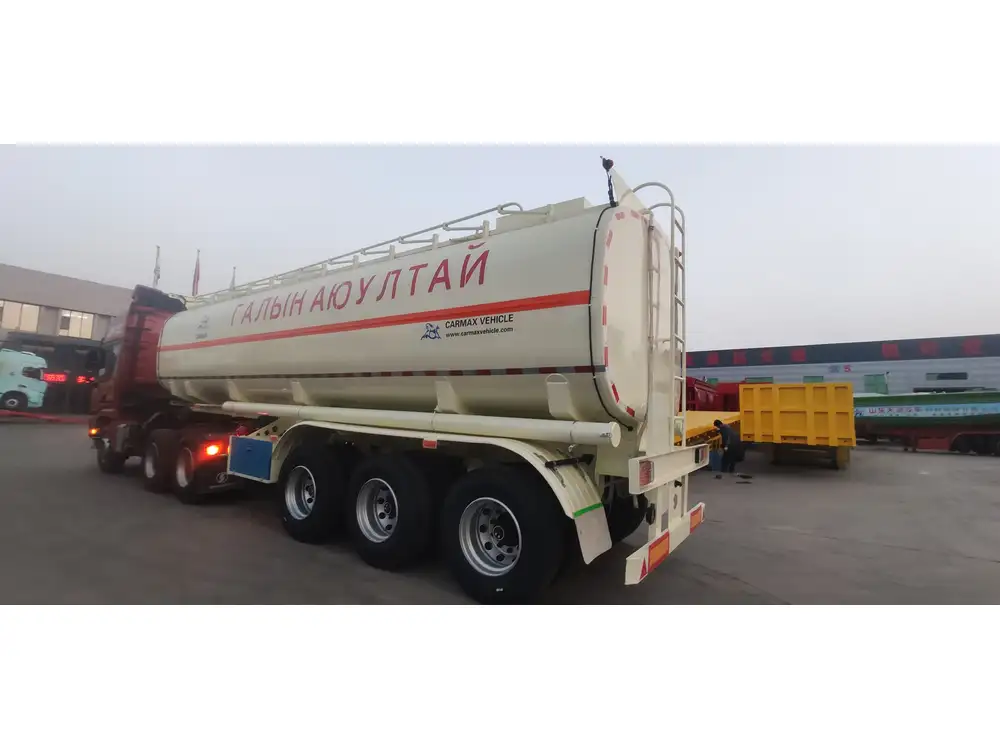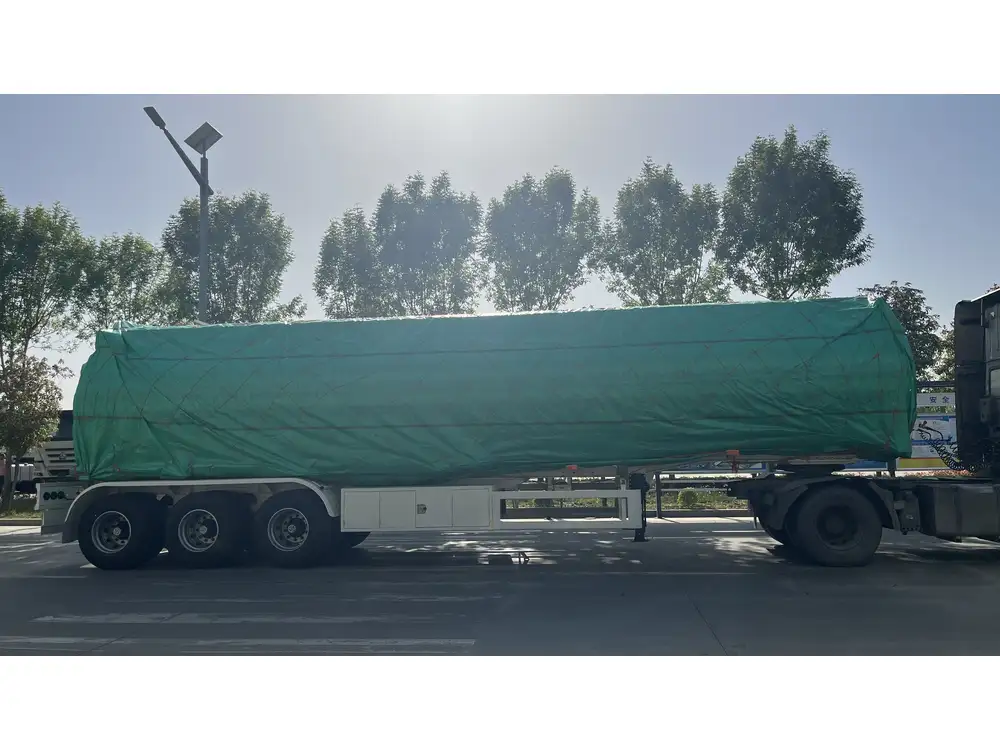When navigating the complexities of the trucking industry, it’s imperative to dig deep into the specifications that govern semi-trailers. One of the most crucial dimensions to grasp is the height of semi-trailers. With the transportation of goods being a cornerstone of modern logistics, understanding the standard heights, relevant regulations, and their implications can significantly affect loading efficiency, compliance with laws, and overall operational safety.
1. Standard Height of Semi-Trailers
1.1 General Height Guidelines
The average height of a semi-trailer typically ranges from 13.5 to 14.5 feet (approximately 4.1 to 4.4 meters). These measurements include the trailer itself plus any additional infrastructure, such as operational equipment.
| Trailer Type | Common Height |
|---|---|
| Standard Dry Van | 13.5 feet (4.1 m) |
| Flatbed Trailers | 13.5 feet (4.1 m) |
| Refrigerated Trailers (Reefers) | 13.6 feet (4.1 m) |
| High Cube Containers | 9.5 feet (2.9 m) |

1.2 Variance Based on Trailer Type
The height can also differ based on the type of semi-trailer. A flatbed, for instance, adheres to a different structural design than a dry van, potentially allowing for variations in height.
Considerations for Height
- Load Type: Different categories of load, such as bulk commodities or oversized freight, may require trailers specifically designed with height variations.
- Regulatory Compliance: Different states or countries may have particular regulations governing permissible heights. For instance, in some jurisdictions, the maximum allowable height may cap at 13.6 feet.
2. Legal Height Regulations: What You Need to Know

2.1 Federal and State Guidelines
Understanding the legal dimensions of semi-trailers is vital for manufacturers, owners, and operators alike. In the United States, the Federal Highway Administration (FHWA) establishes a maximum legal height of 13.5 feet for vehicles on interstate highways. Yet, states can impose their restrictions, which may vary significantly.
| State | Maximum Legal Height |
|---|---|
| California | 14.0 feet (4.3 m) |
| Texas | 13.6 feet (4.1 m) |
| Florida | 13.5 feet (4.1 m) |
2.2 Violations and Consequences of Overheight Loads
Driving a semi-trailer that exceeds the legal height restrictions can lead to substantial penalties, including fines and impoundment, along with risks of accidents involving bridges. Therefore, it’s essential for trucking companies to invest in compliance systems that ensure vehicles meet these legal standards.
3. Factors Influencing Semi-Trailer Height

3.1 Loading and Unloading Mechanics
The height of a semi-trailer has profound implications for loading and unloading processes. The design of loading docks, ramps, and other facilities often corresponds with standard semi-trailer dimensions, and deviations in height can lead to increased complications.
- Dock Height Standards: Most loading docks are built to accommodate trailers up to 4 feet in height off the ground. If the trailer is taller, specialized ramps and equipment may be necessary.
- Forklift Specifications: Forklifts and other lifting equipment vary in their reach capabilities depending on the height of the semi-trailer.
3.2 Custom Builds and Specialized Applications
Manufacturers might offer tailored solutions for specific industries, resulting in semi-trailer heights that aren’t within the conventional parameters. For example, certain refrigerated trailers may exceed standard heights to accommodate larger cargo volumes.
4. Impact on Transportation Operations

4.1 Safety Considerations
The height of semi-trailers directly impacts driving safety, particularly in terms of:
- Visibility: Taller trailers can obstruct the driver’s line of sight at intersections or during lane changes.
- Wind Resistance: Increased height can raise the center of gravity, impacting stability while driving through adverse weather conditions.
4.2 Route Planning
When planning transportation routes, the height of the semi-trailer must be factored into logistics:
- Underpasses and Bridges: Many underpasses and bridges have height restrictions that can lead to significant detours if the trailer height exceeds permitted limits.
- Urban Areas: Cities often have additional restrictions, and semi-trailer drivers must remain vigilant about local regulations.
5. Innovations in Semi-Trailer Design

5.1 Aerodynamics and Efficiency
Modern semi-trailer designs now incorporate adjustable mechanisms potentially allowing for varying heights, which can improve aerodynamics, reducing fuel consumption and increasing operational efficiency.
Features of Innovative Designs
| Feature | Description |
|---|---|
| Adjustable Suspension | Allows for loading adjustments and enhanced safety. |
| Aerodynamic Skirts | Reduces drag by managing airflow over the trailer. |
| Lightweight Materials | Minimizes weight without sacrificing strength, potentially allowing for taller builds. |
6. Best Practices for Managing Trailer Height

6.1 Regular Inspections
Trucking companies should establish regular inspections on height and other dimensions to ensure compliance and safety. Documenting maintenance can safeguard against potential legal issues.
6.2 Training for Drivers
Implementing training programs focusing on height awareness and load management can assist drivers in making safe and informed choices while maneuvering trailers.
6.3 Use of Technology
Incorporating technology such as height sensors and GPS systems can help in avoiding height violations and ensuring that drivers remain compliant during their routes.

Conclusion: The Importance of Height Awareness in Semi-Trailers
In the ever-evolving domain of logistics and transportation, understanding the heights of semi-trailers is not a mere formality; it is a multifaceted issue intertwining safety, efficiency, and compliance. As we have unfolded throughout this article, the dimensions of semi-trailers come with a suite of considerations that influence both day-to-day operations and broader strategic planning.
Above all, recognizing and accommodating for the height of semi-trailers can enhance operational efficiency, reduce risks, and ensure adherence to legal mandates. In an industry where one mistake can lead to significant costs, taking the time to understand and implement effective practices regarding trailer height is crucial for any transportation business seeking to thrive.
By staying informed and prepared, companies can navigate the challenges posed by semi-trailer heights and optimize their operations to meet industry demands while maintaining safety and compliance.
Engage with us further on this topic or reach out for specialized trailers designed to adhere to your specific operational requirements, ensuring you remain at the forefront of the logistics landscape.



